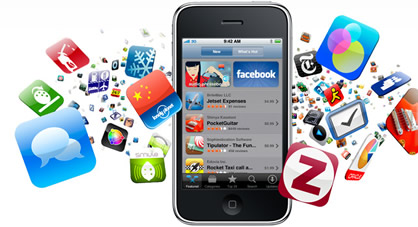A survey of new mobile Internet users found that there are four basic types of users and that their behavior is determined by lifestyles, values, hobbies and spare time activities, and not socio-demographics alone. The four different mobile web user types identified were: Rookies, Rationalists, The Everyday and The Restless.
The aim of the study is to shed new light on current mobile phone Internet usage patterns beyond mobile brand ownership or standard socio-demographics, and gives a deeper understanding of the day-to-day life, values and mindsets of mobile users.
Mobile marketing is the fastest growing marketing channel for creating customer loyalty, increasing awareness and boosting sales. In the next five years mobiles will be the preferred mode of accessing the Internet, and mobile marketing is poised to explode into a multi-billion dollar industry by 2015.

Of the four types, the Rookie’s usage intensity is lowest and he/she is selective for a few very basic services. Rookies don’t fully recognize the larger added value and relevance of mobile web.
The Rationalist uses the web on a regular basis but still lacks an understanding of the real added value.
The Everyday uses the mobile web very often and understands the added value. However, his/her mobile web is no real competition to the stationary web…yet.
The Restless makes the mobile web an integral part of his/her life. Their usage intensity is high and they are very clear about the services and the value the mobile web is offering.
The study was conducted by MRM Worldwide Frankfurt in partnership with the Technical University of Darmstadt, Germany, interviewing 1,717 Internet users between 16 and 70 years old from Germany and the UK in late 2010.
Here is a breakdown of the characteristics of the four types identified:
The Rookie
- Size of the segment: Approximately 15% of the mobile web users.
- Age: By far the oldest segment (one quarter of all the people in the segment is over 45 years old).
- Type of mobile phone: Compared to the other segments the “basic mobile phone“ rules; that is, far less smartphones. This is the only segment where Nokia still holds a strong position.
- Media usage behaviour: All in all less media usage than in other segments. The segment of people who never watch TV or listen to the radio is above average. Internet usage is also not as intensive as in other segments.
The Rationalist
- Size of the segment: Approximately 50% of the mobile web users – by far the largest segment.
- Age: Most people are between 25 years and 45 years old.
- Type of mobile phone: More modern than the Rookie. Nevertheless the feature phone (with access to the mobile net) still dominates the segment with a share of over 50%.
- Media usage behaviour: A more balanced behaviour. However, it’s more a selective usage than an intensive usage.
The Everyday
Size of the segment: Approximately 20% of the mobile web users.
- Age: Considerably younger than the segments before: approx. 55% are not older than 34 years.
- Type of mobile phone: When looking at the types of mobile phones and the brands, the Everyday are nearly identical to the Restless; but with some differences when it comes how they use these gadgets. However, this may only be a question of time.
- Media usage behaviour: “Normal” usage of classical media (including Internet). Compared to the Rookies and the Rationalists, the Everydays show a higher usage of Social Media - without reaching the activity level of the Restless.
The Restless
Size of the segment: The smallest segment with approximately 12% of all mobile web users.
- Age: By far the youngest segment with nearly 70% younger than 34 years old.
- Type of mobile phone: Smartphones (in particular Apples’ iPhone and Android based devices) are the unrestrained rulers. Whereas brands appearing out of date (e.g. Nokia) don’t stand a chance.
- Media usage behaviour: Extensive users in the mobile world and extensive users of other media. In particular, magazines are very popular among this segment. The same is true with Social Media, which is used extensively within this segment – both via stationary and mobile web.
